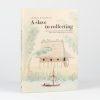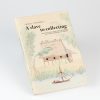János Gyarmati: A slave to collecting
7.350 HUF
298 készleten
A century and a half ago, prominent developments took place in the field of Hungarian museum affairs.
Partly on home soil, partly far from the country. At that time, Ferenc Pulszky was appointed head of the Hungárián National Museum. During the 1869-1872 parliamentary term, he was not only an influential personality within the ruling party and a member of parliament, but also the speaker of the finance committee of the House of Representatives. Partly as museum director, partly due to his political weight, he worked hand in hand with his childhood friend, the Minister of Religion and Education József Eötvös, to bring the National Museum under the supervision of the Hungarian Parliament, both legally and financially. In the budget debate about this, Eötvös (1976a: 93) gave a speech in which he basically set a new direction fór the future operations of the National Museum. During the following years, Pulszky created a modern museum structure divided into departments which nőt only determined the internál structure of the National Museum, but also the nature of other museums developing from its departments. In parallel, events that significantly impacted Hungárián museums were taking place in distant parts of the world, in Ceylon [Sri Lanka], China, Japan and Southeast Asia. At that time, the frigate Donau of the navy of the Austro-Hungarian Monarchy sailed around the world so that the delegation it was earrying could conclude diplomatic and trade agreements with three East Asian and four South American countries on behalf of Emperor and King, Franz Joseph. Collecting scientific objects and knowledge was integral to such trips for centuries. Until that time, however, Hungary had not had an opportunity to participate insuch expeditions alone due to its political position. This situation changed thanks to the dualistic political system created in 1867 as a result of the Austro-Hungarian Compromise, i.e. the establishment of the Austro-Hungarian Empire. It was then that the Mathematics and Natural Sciences Department of the Hungárián Academy of Sciences and the president of the academy, József Eötvös, seized the first opportunity that presented itself. As minister of religion and education, i.e. culture of the first Hungarian government after the Compromise, he arranged for Hungarian scientists to participate in and possibly collect during the expedition. Eötvös not only won the right for Hungarian scientific participation in the face of the government in Vienna. His role was also outstanding because, aside from the traditional focus on natural history, he initiated collection of “ethnological” objects and Information as part of the agenda. Although the acquisition scope of the Hungárián National Museum, founded in 1802, was basically limited to Hungary, the natural Sciences already began to stretch this framework by the 1830s due to their universal nature.1 Thus, even though only occasionally, cultural goods from outside Europe came into the museum’s collections, mainly as gifts. They primarily consisted of coins, bút alsó, from time to time, included
Egyptian antiquities. The dividing line between the acceptance of such assemblages was basically determined by whether the ereators of the objeets in question were classified as “natural” or “cultural” peoples or from past civilizations, and whether the objeets were offered as gifts or as items for purchase. Following such antecedents, József Eötvös’ instructions to János Xántus were delivered in November 1868. According to him, Xántus should “increase the natural history, ethnographic and bibliographic collections of the Hungarian National Museum, the Hungarian Academy of Sciences, and the Royal Hungarian University of Science”.2 This was a clear sign of the change in the way cultural policy leaders envisioned the future of Hungarian public collections following the Compromise. In this request addressed to
Xántus, a government off icer for the f irst time issued instructions to collect ethnographic/artisanal matéria! to fill public collections and assigned State resources for this task. However, Eötvös’ wish, triggering Xántus’ resulting collecting activity, did not merely represent a fundamental change in the composition of the objeets targeted. It also required an enormous output of energy in terms of their quantity. The approximately 155,000 objects sent home by Xántus was an increase of an importance that can hardly be overestimated fór Hungarian public collections. His collection Iaid the foundation fór the Museum of Ethnography and the Museum of Applied Arts. In addition, he made a huge contribution to the various collections of the Natural History Museum and the materials within the National Museum’s numismatic collection. More than one hundred and fifty years have passed since the expedition, and it still awaits a comprehensive and in-depth assessment. I set the goals of the research that forms the basis of this volume accordingly. They include the exploration of the driving
forces behind the establishment of the Austro-Hungarian expedition to East Asia, reconstructing the course of the expedition and what its results were. Finally, it is nesessary to consider the expedition’s impact on the development of museums in Hungary. However, even a thorough elaboration of the expedition’s prehistory and implementation would have remained just an isolated story without the presentation of the roots and the social and academic environment in which these museums were born. Therefore, tracing the formation of Hungarian ethnographic museology is another goal of this book. Inevitably, the figure of János Xántus gradually revealed itself during my researchinto the history of museums and Science in Hungary. He not only played a leading role in the process. As we say today, all of this would nőt have been possible without him. After learning about his struggles – first for the creation of natural history and then ethnographic collections – a special and at the same time controversial personality took shape before me. Someone who, after several years of apparently aimless tossing and turning, suddenly discovered the activity to which he had subordinated his whole life. It was a profession to which, in his own words, he had made himself a slave. A slave to collecting. During the research, I increasingly felt that it was important to get to know and present Xántus’ personality and the driving forces behind his actions as best as possible. It became clear that it is impossible to understand his activities in East Asia without exploring his work in North America. Thus, the research that originally focused on the East Asian expedition also expanded into a Xántus biography. This forms the third main thread of this volume. The image of Xántus emerging from the sources is certainly vague and fragmentary, as it is mainly based on the highly subjective narratives of the main character himself. Contemporary reports about him are quite fragmentary. Since of the so-called ego-documents (correspondence, diary, memoir, autobiography,
Gyáni 2019; Kövér 2011), only Xántus’ own letters are available, there is no way to use the tools of psychobiography to help finding a satisfactory explanation for key issues already raised by others about Xántus’ life. Some of these were detailed by one of his biographers, who also followed up on his false statements and plagiarisms (Madden 1949:211-250). Still, I am convinced that without even such an incomplete reconstructionof his personality, this review would have been significantly poorer.
Csak bejelentkezett és a terméket már megvásárolt felhasználók írhatnak véleményt.






Értékelések
Még nincsenek értékelések.